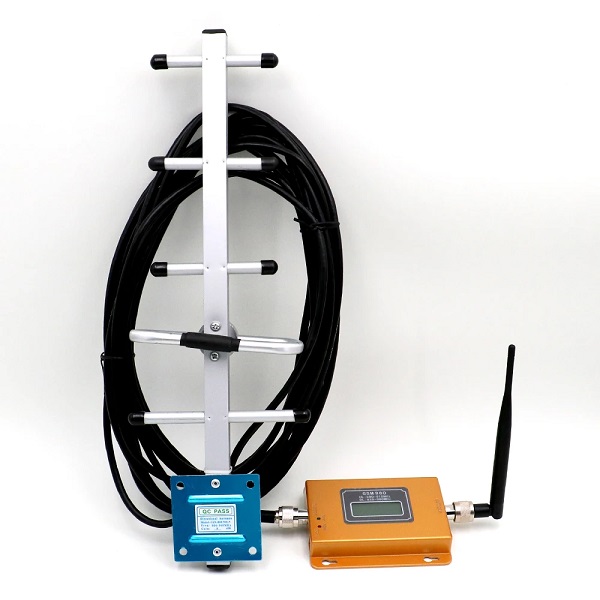Products
Current location: >>Home >> News>> Mastering Mobile GSM Repeaters: Unlocking Superior Signal Quality and Network Performance
Mastering Mobile GSM Repeaters: Unlocking Superior Signal Quality and Network Performance
In the ever-evolving world of communication, mobile GSM repeaters have become an essential tool for ensuring optimal signal quality and network performance. This comprehensive guide delves into the intricacies of mobile GSM repeaters, exploring their design, functionality, and applications. Whether you are a tech enthusiast, a professional in the telecommunications industry, or simply someone interested in understanding the technology behind our connected world, this guide will provide you with valuable insights into the world of mobile GSM repeaters.

I. Introduction
A. The Importance of Mobile GSM Repeaters
As cellular networks expand coverage, certain interior spaces prove challenging due to infrastructure costs for deep indoor coverage. However, allowing mobile use in such areas unlocks productivity benefits. Mobile GSM repeaters address this need effectively.B. The Role of Mobile GSM Repeaters in Modern Communication
By amplifying signals at critical in-building dead zones, mobile GSM repeaters enhance user experience indoors. This facilitates applications like IoT, telemedicine and remote assistance where seamless mobility is essential.II. Basics of Mobile GSM Repeaters
A. What is a Mobile GSM Repeater?
A mobile GSM repeater is a bidirectional amplifier that receives, amplifies and retransmits GSM/2G-4G cellular signals to extend coverage for indoor/outdoor fringe areas.B. Key Features and Characteristics
Repeater components include donor and service antennas, low-noise amplifier, adjustable gain amplifier and duplexer. Compact size, mobility and ease-of-use are important.III. Design and Construction of Mobile GSM Repeaters
A. Antenna Types and Configurations
Omnidirectional antennas provide 360°coverage, while directional models target specific zones. Combination types optimize performance for multi-floor buildings.B. Material Considerations
Military-grade aluminum housing and weather-sealed cables ensure durability. Temperature-stable materials sustain functionality in outdoor conditions.IV. Functionality and Performance
A. Signal Strength and Range
Amplification boosts signals by 90-110dB, extending coverage by 500-1000m radius depending on obstruction density.B. Coverage Area and Capacity
Donor antenna placement and adjustable gain optimizes coverage footprint for 10-50 simultaneous users per repeater.V. Applications of Mobile GSM Repeaters
A. Telecommunication Networks
Repeater augment outdoor macro networks indoors to deliver uninterrupted coverage seamlessly.B. Satellite Communications
Deployed onboard aircrafts, ships or rigs to facilitate reliable SATCOM terminal connectivity in motion.C. Wireless Internet Services
Deliver fail-proof WiFi handoffs between indoor/outdoor APs for continual mobility support.VI. Installation and Maintenance
A. Site Assessment and Preparation
Site survey determines optimum antenna locations factoring building topology and signal challenges.B. Installation Guidelines
Certified installers precisely position antennas as per guidelines using non-interruptive wall/window mounts.C. Maintenance Tips and Best Practices
Periodic testing and firmware updates ensure compliance with network optimizations avoiding downtime.VII. Case Studies
A. Successful Deployments of Mobile GSM Repeaters
A mining group regained connectivity after deploying repeaters across underground tunnels. Hospitals overcame blackspots impeding telehealth rollout.B. Challenges and Solutions in Real-World Scenarios
Adjacent network interference was mitigated through selective filtering. Non-linearities were resolved using linear amplifier architectures.VIII. Future Developments and Innovations
A. Technological Advancements
AI-powered repeaters will optimize performance autonomously. Beamforming, massive MIMO and advanced amplification will enhance capabilities.B. Emerging Applications and Use Cases
Intelligent buildings, factories, malls, campuses and smart cities will harness repeaters for ubiquitous connectivity indoors.IX. Conclusion
A. The Significance of Mobile GSM Repeaters in the Future of Connectivity
By eliminating coverage gaps, repeaters are essential for truly mobile industries from education to healthcare. This makes continued innovation vital.B. Encouraging Continued Research and Development
Stakeholders must collaborate to drive standardization and progress repeater technologies aligned with 5G evolution and scenarios beyond standard communication. Unlimited possibilities await!

 Mobile Signal Booster
Mobile Signal Booster